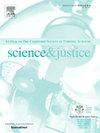A Comparative Analysis of Computed Tomography, Photogrammetry, and Structured Light Scanning for Biological Sex Estimation in Forensic Anthropology – A Review
IF 1.9
4区 医学
Q2 MEDICINE, LEGAL
引用次数: 0
Abstract
Advanced scanning techniques are increasingly used to aid in forensic human identification by enabling rapid and non-destructive documentation of remains, and permitting measurements not possible on dry bone. However, to ensure that the results achieved are reliable, methods must be rigoursly tested and validated. By reviewing relevant literature, this paper compares the use of three popular advanced imaging techniques used to aid forensic human identification – computed tomography (CT), structured light scanning (SLS), and photogrammetry – with a focus on biological sex estimation from 3D rendered models of the cranium, mandible, and pelvis. Each technology was assessed based on its accuracy, speed, cost, portability, level of training, and software requirements in a forensic context. This review highlights that while CT continues to be considered the ‘gold standard’, structured light scanners and photogrammetry offer significant practical advantages for virtual skeletal analysis. Despite their accuracy and reliability, CT machines are expensive, difficult to transport, and require significant training to operate and utilise relevant software. SLSs can be easy to transport and do not demand significant training to operate, but extensive training is preferable for data interpretation. Further research is required to establish the accuracy of using SLS for sex estimation. Photogrammetry is cost effective, yields a high accuracy, requires minimal training, and the required equipment is easily transported. This paper highlights that both SLS and photogrammetry are viable alternatives to CT for creating accurate models of bones for biological sex estimation. This study intends to act as a guide for forensic anthropologists when selecting which advanced imaging techniques to employ in various forensic contexts.
计算机断层扫描、摄影测量和结构光扫描在法医人类学中用于生物性别估计的比较分析综述
先进的扫描技术越来越多地用于帮助法医鉴定人类,使遗骸的快速和非破坏性的文件记录,并允许测量不可能在干骨。然而,为了确保获得的结果是可靠的,必须对方法进行严格的测试和验证。通过回顾相关文献,本文比较了用于辅助法医鉴定的三种流行的先进成像技术的使用-计算机断层扫描(CT),结构光扫描(SLS)和摄影测量-重点是通过头盖骨,下颌骨和骨盆的3D渲染模型进行生物性别估计。每种技术都是根据其准确性、速度、成本、可移植性、培训水平和取证环境中的软件需求进行评估的。这篇综述强调,虽然CT仍然被认为是“金标准”,但结构光扫描仪和摄影测量为虚拟骨骼分析提供了显著的实用优势。尽管CT机具有准确性和可靠性,但它们价格昂贵,运输困难,并且需要大量培训才能操作和使用相关软件。SLSs易于运输,不需要大量的培训就可以操作,但广泛的培训更适合数据解释。需要进一步的研究来确定使用SLS进行性别估计的准确性。摄影测量具有成本效益,准确度高,需要最少的培训,所需的设备易于运输。本文强调,SLS和摄影测量都是CT的可行替代方案,用于创建准确的骨骼模型以进行生物性别估计。本研究旨在作为法医人类学家在选择在各种法医环境中使用哪种先进成像技术时的指南。
本文章由计算机程序翻译,如有差异,请以英文原文为准。
求助全文
约1分钟内获得全文
求助全文
来源期刊

Science & Justice
医学-病理学
CiteScore
4.20
自引率
15.80%
发文量
98
审稿时长
81 days
期刊介绍:
Science & Justice provides a forum to promote communication and publication of original articles, reviews and correspondence on subjects that spark debates within the Forensic Science Community and the criminal justice sector. The journal provides a medium whereby all aspects of applying science to legal proceedings can be debated and progressed. Science & Justice is published six times a year, and will be of interest primarily to practising forensic scientists and their colleagues in related fields. It is chiefly concerned with the publication of formal scientific papers, in keeping with its international learned status, but will not accept any article describing experimentation on animals which does not meet strict ethical standards.
Promote communication and informed debate within the Forensic Science Community and the criminal justice sector.
To promote the publication of learned and original research findings from all areas of the forensic sciences and by so doing to advance the profession.
To promote the publication of case based material by way of case reviews.
To promote the publication of conference proceedings which are of interest to the forensic science community.
To provide a medium whereby all aspects of applying science to legal proceedings can be debated and progressed.
To appeal to all those with an interest in the forensic sciences.
 求助内容:
求助内容: 应助结果提醒方式:
应助结果提醒方式:


